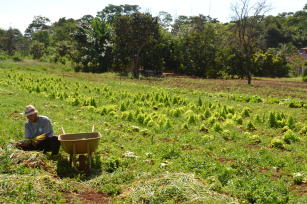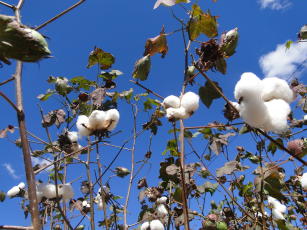Research to select microorganisms that fight sugarcane borer and red rot
Research to select microorganisms that fight sugarcane borer and red rot
An Embrapa study whose project was recently approved by Faperj aims to contribute to the control of the borer rot complex that attacks sugarcane and develop a biological input that can minimize the problem in sugarcane croplands. The intention is to study how endophytic microorganisms from the Bacillus genus can be used for that purpose. “These microorganisms have the ability to produce spores that ensure their survival under adverse circumstances; some of them, like the bacteria that belong to the B. thuringiensis species, produce the so-called Cry proteins, responsible for the bioinsecticide action that is lethal to the borer”, states the researcher José Ivo Baldani, from Embrapa Agrobiology (Seropédica, RJ), who leads the work.
The researcher explains that the bacteria from that species are capable of colonizing internal plant tissue and, during their sporulation stage, they could produce the Cry pro-toxins. In addition, other Bacillus strains which antagonize the rot-causing fungus could be jointly inoculated with said bacteria, with the purpose of inhibiting the fungus from entering the holes caused by the borer. “The research hypothesis is that our culture collection has strains that can promote the biological control of the borer and of the fungus that causes red rot in sugarcane croplands”, he asserts.
Caused by Diatraea saccharalis (a moth species), the sugarcane borer has been controlled with several kinds of management: chemical and biological control, and, more recently, with genetically modified plants. The biological borer control of the borer has been consideread a successful program since it increases the pest's natural enemies in the agroecosystem, but it is stumped by the issue of the large-scale multiplication of such enemies and the suitable time for their application. Chemical control, in turn, not only has high cost but also causes problems to beneficial organism populations in the soil and to the environment, as it leaves chemical traces that can be transported to water source. At last, control via GMOs, which entails the development of sugarcane varieties that can express the Cry genes, is still not available in the market.
As for the rot caused by the Colletotrichum falcatum fungus, there is no chemical control available yet. Recent studies have pointed to the potential of endophytic bacteria against it, which increases the expectation that they will positively work against sugarcane rot. “Their endophytic behaviour is believed to enable the bacteria to remain in the corp areas for longer, potencializing the pest and fungal control and thus contributing to reducing crop costs, with increased yield and sustainability in the agroecosystem”, the researcher explains.
Sucargane could have their yield increased
Brazil is the largest sugarcane producer in the world, with approximately 620 million tons of sugarcane planted in an area of 8.59 million hectares – or 72.23 tons per hectare. It is one the country's main crops and it can be found in nearly all the territory, of which the states of São Paulo and Minas Gerais are responsible for about 64% of the total production. The data are from the National Supply Company (Conab). Despite that, the average yield per hectare is considered low, especially due to production losses resulting from environmental and management factor or the incidence of pests.
The losses for Brazilian agribusiness caused by the sugarcane borer are estimated at over R$ 5 bi a year, even with the different kinds of management applied to control the pest. “Such financial damage could be even higher if we consider that D. saccharalis also attacks other cash crops like rice, oats, barley, millet, maize and sorghum”, Ivo reveals.
To prospect the culture collection so as to find bacteria that have potential to control the sugarcane borer-rot complex, in vitro bioassays should be conducted to select bacteria with C. falcatum antagonic activity and that are enomopathogenic to the borer. The intention is to select five Bacillus strains with antifungal activity agains C. falcatum strains and five with entomopathogenic activity against borer larvae, and detect the presence of Cry genes in the latter. The strains will have their efficiency tested both in greenhouses, in the presence of the fungus and of the pest, and in the fields, in areas infested by the pest and in areas infested by the fungus.
Translation: Mariana Medeiros
Liliane Bello (DRT 01766/GO)
Embrapa Agrobiology
Press inquiries
agrobiologia.imprensa@embrapa.br
Phone number: +55 21 3441-1500
Further information on the topic
Citizen Attention Service (SAC)
www.embrapa.br/contact-us/sac/




